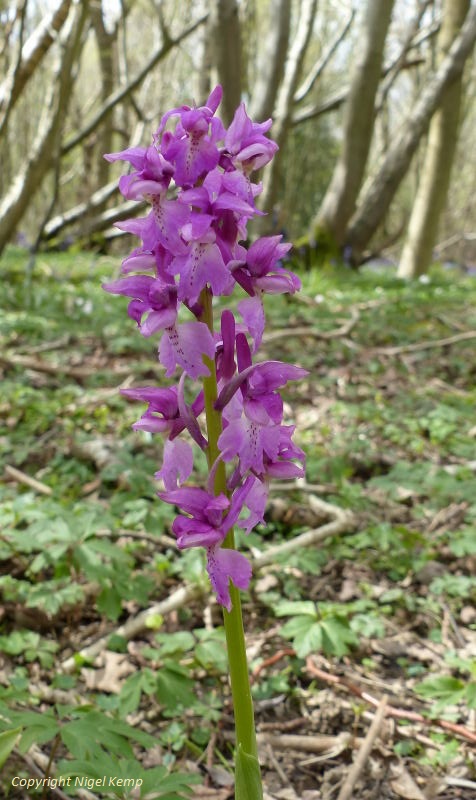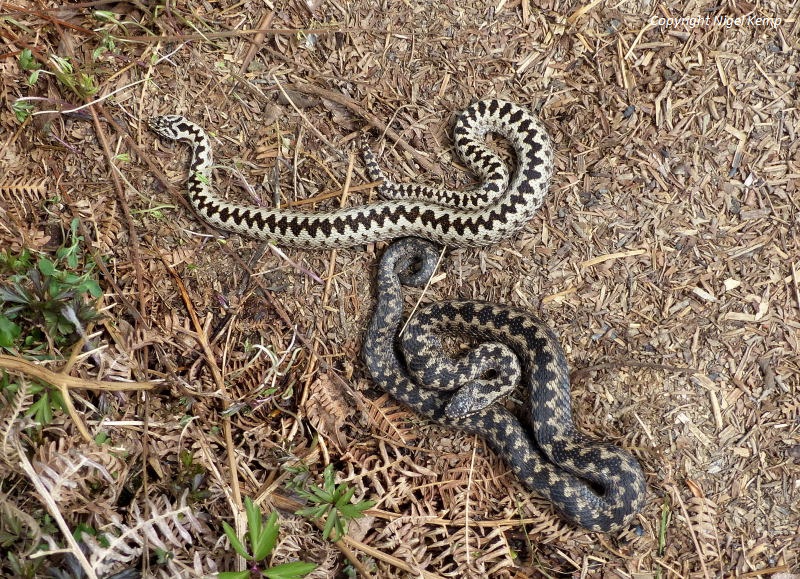The weather this week has continued in the same vein as last week with a persistent cool edge to the breeze adding a significant wind chill factor. This does appear to be depressing butterfly numbers at the moment but nature can only hold back for so long and eventually they must emerge in order to continue the life cycle for the next generation.
The week started with another walk through my local woods; the Early Purple Orchids are coming into full flower and the Bluebell carpet is being rolled out.
Early Purple Orchid (Orchis mascula)
Slow-worm (Anguis fragilis) (male)
On Wednesday I met up with Bob for our weekly walkabout. Both of us were still in search of our first Orange-tip of the season and in less than ideal weather conditions we managed to find one each. I also found my first Speckled Wood of the spring which did not settle for a photograph but the Orange-tip was much more obliging.
Orange-tip (Anthocharis cardamines) (male)



























